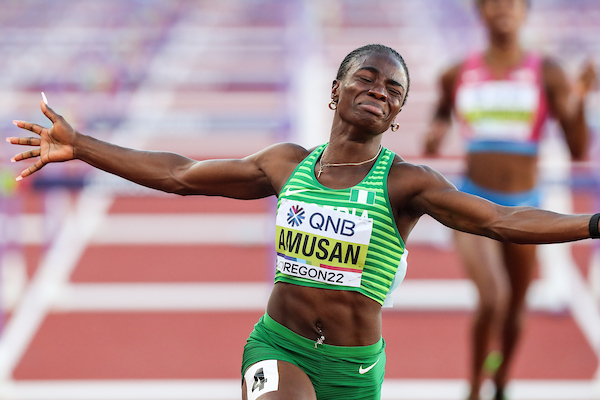
Deji Ogeyingbo asked the big question, why don’t sprinters from the African continent win more global championship sprint medals, and how the continent can learn from sprint-rich Jamaica.
Why do African athletes rarely break world records in the sprints?
When Nigeria’s Tobi Amusan broke the women’s 100m hurdles record on the last day of the World Athletics Championships lowering Kendra Harrison’s mark by 0.08s by clocking 12.12s, her feat caught the ire of American track great Michael Johnson, who insisted there was an error with the electronic timer at the stadium.
His premise for such was hinged on the fact that every other athlete on the field broke a National Record or set a new Personal Best, something that rarely happens in a sprint race. Understandably, that should be the first instinct for someone so entrenched in a sport that has been widely criticized by the outside world for its long history of being tainted by drug use, especially in the sprints.
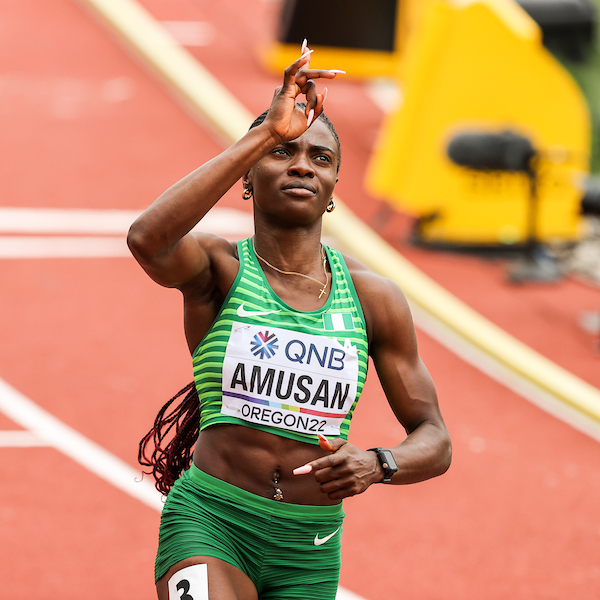
Eugene, Oregon, USA
July15-26, 2022, by Kevin Morris
And even though Amusan later went on to lower the record in the final by clocking 12.06(+2.5m/s), it showed a larger extent the validity of the Nigerian previous feat when she raced in the semifinal two hours before, especially if you adjusted the latter time to a legitimate wind reading of +2.0m/s.
Still, a wider throw of the net reveals a more entrenched problem to some of these prejudices about the potential of African athletes to dominate in the sprints on the global stage.
Kenya and Ethiopia finished with 10 medals each at the just concluded World Championships sitting in second and fourth, but it all of those podium finishes came in events ranging from the 800m to the marathon.
Moving down the ladder of events in global championships and major events in the Track and Field world, there’s a shortage of medal winners for Africans in the sprints. This is also reflective of the continent’s ability to break world records in these disciplines compared to the middle-distance and long-distance events.
All of these facts further prove the extent to which how remarkable Amusan’s world record in the women’s 100m hurdles is. So why can’t African Sprinters ruffle feathers with some of their European and American counterparts?
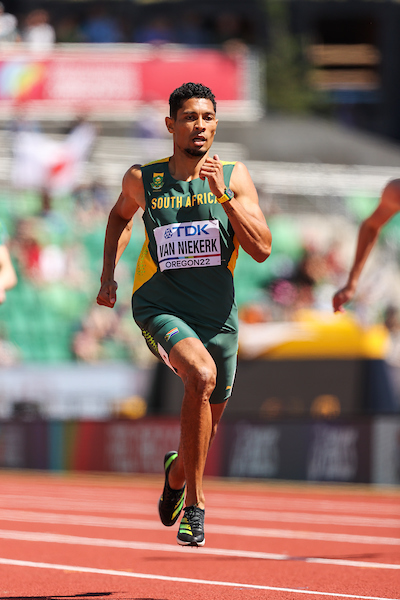
In events ranging from 60m to 400m, including all of its other variations that we rarely witness at major championships both indoors and outdoors, an African Sprinter only holds the three world records: Namibia’s Frank Fredericks in the men’s 200m indoors (19.92), Amusan in the women’s 100m hurdles and South Africa’s Wayde Van Niekerk in the men’s 400m (43.03s).
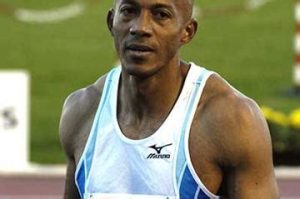
Nigeria and South Africa have always led the way when it comes to jostling it out in the sprints with some of the established countries in the last four decades. More recently, Botswana has joined up with some of their younger generations of sprinters, most of whom drew inspiration from the great Isaac Makwala.
Still, there is a dearth of results from these sprinters on the global stage, especially when you juxtapose the talents and potentials of athletes from the continent with the outcome. Medals are scarce to come by, and on a larger scale, records are rarely broken by African sprinters.
Most of the problems are entrenched in the developing status of these countries on the continent. The sprints, unlike distance running, require optimum preparation, cutting across various aspects. Right training environment, world-class training equipment, the best of coaches, exposure to quality competition, and getting the right nutrition are some of the factors that contribute to seeing a sprinter reach the pinnacle of his/her discipline.
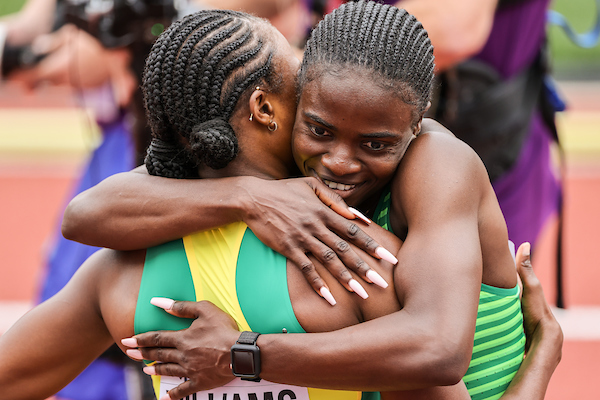
With distance running, most of these factors can be mitigated as talent and environment take up a large chunk of what an athlete needs to succeed. The likes of Eliud Kipchoge, Letesenbet Gidey, Joshua Cheptegei, and Kenenisa Bekele were raw and precocious athletes who stayed back in the high altitude of Kenya, Ethiopia, and Uganda to train, and they still managed to reach the top of their events.
Sprinting takes a whole different dimension. The United States and Jamaica are the two countries that dominate in these parts of track and field. The US, on their path, have created structures over the last five decades that ensured their sprinters come out tops in global championships. The collegiate circuit in the Universities builds up their athletes to be top professionals as they become familiarized with a large part of what it takes to get to the top there of their discipline as a sprinter.
It’s grueling, but it works. To add to that, the United States Track and Field Association invests thousands of dollars over a four-year period in these sprinters to ensure that come up fit and deliver breathtaking performances at the Olympics or the world championships. The huge outlay of money and exposure to competitions puts the African sprinter at the disadvantage.
On the other side of the divide are the Jamaicans, who have ruffled feathers with the US in the sprints. They are also a developing country like most African nations. Yes, they are genetically superior in terms of their sprinters. However, that alone didn’t take the likes of Usain Bolt, Yohan Blake, and Shelly-Ann Fraser-Pryce to the peak of their powers.
The Caribbean nation found a way to mitigate some of their deficiency despite them being a third-world nation. Athletics and Reggae are their biggest exports, and they made sure to pay attention to them. They made the Boys and Girls high school championships- one that brings together the best of high school sprinters, one of the biggest in the world. The ripple effect of these served as an equalizer to the NCAA championships in the US.
Some of their top track clubs, like the Racer’s track club and MVP, had collaborations with the top Universities to use their stadium to train their bourgeoning sprinters, which in turn provided a propitious environment for developing them.
They might not be up to the level of the US, but they’ve given them a good run for their money. African countries can take a leaf from Jamaica. It’s a long shot, and until competent and less corrupt officials run African athletics and pride is restored to wearing national colors, the continent’s most talented sprinters will struggle to match up with their counterparts in the US. For now, the country will savor the feat of Amusan.
‘

